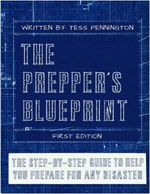
Watching the aftermath unfold during recent major disasters, has caused many of us to wake up and start finding solutions to be better prepared and more independent. One of these solutions is finding ways to conserve water for later use. Instead of looking forward to the future to find the answers, we are turning our heads back to past, to our forefathers. Many have begun to grow gardens, care for livestock, and started learning self reliant practices.
Conserving water is an important aspect of preparedness and homesteading alike. It is also something that every home can begin practicing. These conservation methods teach individuals the importance of frugality, prudence and self reliance. Using water consumption calculators is a great way to start researching how much water is used on a daily, weekly and monthly basis. When a person gets an idea as to how much water is used in the home, they can begin making appropriate changes.
Here are six easy ways to conserve and recycle water for later use:
1. Use rain collection barrels. This is one of the most efficient ways of collecting water. Because the barrels come in different sizes, you can adjust your conservation method to how you see fit. If a person does not have rain collection barrels, they could use buckets placed out in the yard to collect water. The stored water can be used for a short or long term needs. As well,because rain water lacks all the chemicals added to tap water, it can be used for other purposes such as feeding livestock, or watering the garden with.
2. Re-use water that drains out of flower pots. Depending on the size of the pot, simply place a plastic plate or bucket under the flower pot and any water that drains out can be re-used in the garden.
3. Save kitchen water. Water used to clean dishes can be dumped in the toilet bowl for flushing. Water used to cook vegetables or pasta with can be dumped (the water must be cooled) into the compost pile, in the garden or in the vermiculture area. *Make sure the water has completely cooled so that you do not harm the microorganisms or worms.
4. Do your own laundry by hand. Fresh laundry dried by the sun costs no money and the sun naturally removes stains.
5. Take baths instead of showers. Studies show that 7-8 gallons of water is used every 5 minutes that a person takes a shower. If you decide to take a shower, when allowing the water to warm up, put a bucket in the shower to collect the cooler water. Choose salt-free liquid soaps. As well find soaps that natural body products void of substances toxic to humans, including parabens, stearalkonium chloride, phenoxyethanol, polyethelene glycol (PEG), and synthetic fragrances.
6. Water that has been poured in cups and not drank or water bottles with water in them already can be re-used. Simply boil the water to kill any germs (the boiling method also oxygenates the water and “freshens” it up), and can be used for drinking water. If this method does not sound kosher, the water could also be used to water house plants. And the plastic bottles can be used in the garden as miniature water irrigation systems.




























